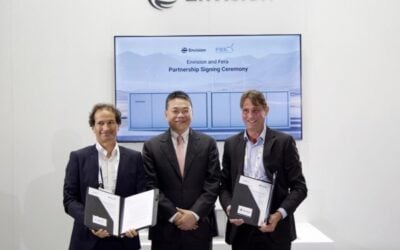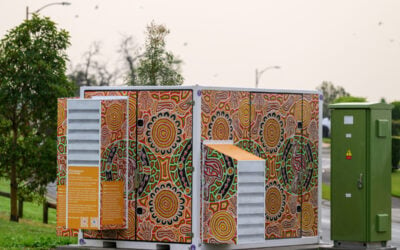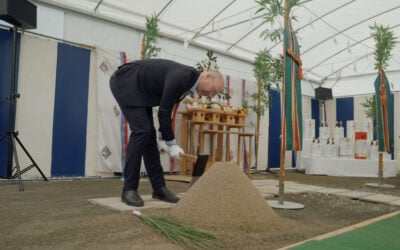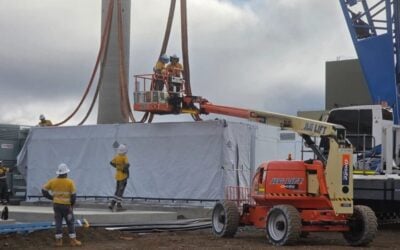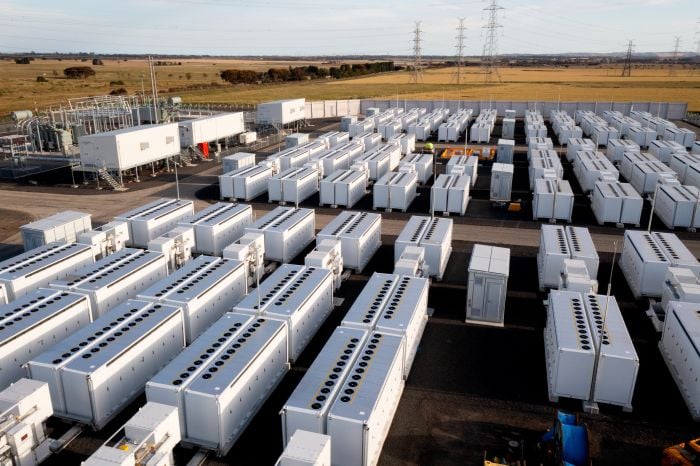
Australian energy retailer Origin Energy intends to build a 700MW battery storage system on the site of a coal power plant for which it has brought forward a planned retirement date by seven years.
The economics of operating coal generation are rapidly diminishing as solar, wind and storage are outcompeting the fossil fuel in the National Electricity Market (NEM) and the company intends to exit coal entirely with the retirement of its 2,880MW Eraring coal plant in New South Wales (NSW).
Enjoy 12 months of exclusive analysis
- Regular insight and analysis of the industry’s biggest developments
- In-depth interviews with the industry’s leading figures
- Annual digital subscription to the PV Tech Power journal
- Discounts on Solar Media’s portfolio of events, in-person and virtual
Origin Energy has submitted notice to the Australian Energy Market Operator (AEMO) that it wants to close Eraring down by August 2025, not 2032 as originally planned. Three and a half years’ notice are required and the company has triggered that process.
The exit from coal-fired generation is a reflection of the “continuing, rapid transition of the NEM as we move to cleaner sources of energy,” Origin CEO Frank Calabria said yesterday.
“Australia’s energy market today is very different to the one when Eraring was brought online in the early 1980s, and the reality is the economics of coal-fired power stations are being put under increasing, unsustainable pressure by cleaner and lower cost generation, including solar, wind and batteries,” Calabria said.
Wholesale energy pricing is being impacted by the growth of wind and solar, as renewables and batteries become more competitive. This is making Origin’s cost of energy likely to be more economical through a combination of renewables, battery storage and peaker power plants.
Battery energy storage system (BESS) assets are earning increasing revenues in the NEM from a combination of streams. According to market data estimates from the AEMO, battery storage earned AU$14 million (US$10.08 million) from delivering frequency control ancillary services (FCAS) in Q4 2021, up AU$4 million from the same quarter in the previous year. This was equivalent to about 68% of total NEM revenues for battery storage.
In the wholesale market, battery storage, along with natural gas and liquid-fuelled generation were called up to manage rapid changes in net supply requirements in response to increased spot price volatility cause by a range of factors.
At one point in mid-November 2021, large-scale wind and solar, hydro, biomass, distributed PV and battery storage discharges made up a combined 61.8% of total generation in the NEM, a record high.
Taking the AEMO report as a snapshot of things to come, the energy arbitrage value of battery storage also drove increased net revenues from the energy market in South Australia. In that state the volume-weighted energy arbitrage value of battery storage jumped from AU$39/MWh in Q4 2020 to AU$138/MWh in Q4 2021.
The 300MW/450MWh Victorian Big Battery also came online last year in Victoria, capturing a combined AU$1.3 million in revenues from FCAS and energy markets in Q4 2021 alone, as well as benefiting from a service contract to protect the state’s network from outages, called the System Integrity Protection Scheme (SIPS).
Another factor that Origin Energy said was decimating the competitiveness of coal was the ability of battery storage to respond much more quickly to signals from the grid to provide power, in a way that coal could not.
In October last year the AEMO introduced five-minute settlement (5MS) into the NEM, calculating energy and cap prices on a 5-minute basis, rather than every 30 minutes as before.
While it is still early to conclusively say what the impact of 5MS will be, many had said this would be a massive boon for batteries. AEMO said that in Q4 2021 it had already stopped dispatch prices falling to its floor of -AU$1,000/MWh after high dispatch intervals.
This had become a regular occurrence prior to 5MS’ introduction, as under 30-minute settlement loads and generation units were financially incentivised to rebid early in 30 minute intervals following price spikes.
Battery systems in South Australia had taken AU$400,000 higher revenues under 5MS than would have happened under the 30-minute regime.
Going forwards, AEMO recently introduced new regulations to incentivise investment in battery storage, and is also preparing to launch an ancillary services market for fast frequency response, which again, would favour the almost-instantaneous response times of batteries.
700MW BESS project would get underway in advance of closure
Origin Energy’s original 2032 retirement date for Eraring had been based on the expected technical end-of-life of the plant. That now comes forward significantly and the company said it will help it remove a significant portion of its Scope 1 greenhouse gas (GHG) emissions, in line Origin’s commitment to getting in line with the multi-lateral Paris Agreement’s 1.5°C pathway.
“We acknowledge this news will be challenging for many of our colleagues, suppliers and the local community,” Origin CEO Frank Calabria said.
“This is only the start of the process, and we commit to consulting with our people, and supporting them, through any potential closure.”
The cost of Eraring’s closure had originally been stated at AU$240 million by the company, which said this will now be revised in light of the new proposals. The prospective 700MW BESS asset would likely be built in stages, starting well before the coal plant’s final shutdown of its four generating units.
The influx of renewables “has changed the nature of demand for baseload power,” the CEO said.
Calabria said Origin’s decision-making had been taken after careful consideration including “extensive consultation” with the NSW government. This includes an assessment of how the retailer’s investment can meet the aims of the state government’s Electricity Infrastructure Roadmap.
The roadmap will likely guide the company’s investments into renewables and storage, including a possible expansion of its pumped hydro energy storage (PHES) facility at Shoalhaven.
Our sister site PV Tech has reported over the past couple of weeks that plans by the government of NSW to create large Renewable Energy Zone (REZ) sites in the state have been met with dozens of gigawatts of proposals from clean energy developers, including wind, solar, battery storage and pumped hydro.
It’s likely that next on the agenda after coal in Australia’s energy transition industries will be demonstrating that energy storage can effectively deliver peaking capacity in place of gas peaker plants.
There was dismay recently as plans progressed in New South Wales to build a 660MW diesel and gas peaker plant. Academics, environmental and clean energy industry groups have all stated emphatically that battery storage can be a more viable option than the polluting and often underused thermal power assets.

